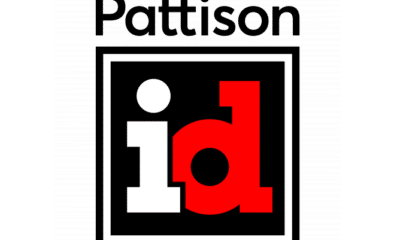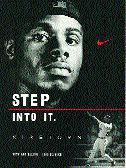Wander into any Niketown store and you’ll find yourself surrounded from floor to ceiling with an eye-popping array of larger-than-life images and statues of famous athletes, action-packed videos, backlit aquariums, in-store basketball courts and numerous other attractions. This lively, fun-focused retail environment, dedicated to the sale of authentic Nike merchandise, is designed to inspire amateur athletes to "just do it."
Last summer, in preparation for the Olympics and the opening of Niketown stores in Seattle and Los Angeles, Nike asked advertising consultants at Leap Partnership to prepare a multi-faceted, five-week rollout campaign featuring high-quality images of six world-renowned athletes. To avoid miscommunications, delays, and end products with noticeable color differences, Leap Partnership decided against hiring various prepress companies to supply films to outside printers. Instead, Leap Partnership turned to Wace USA, Inc. as a single source of image management and output production. Headquartered in Chicago, The Wace Group is a digitally linked network of prepress, print and photo-imaging units.
Six Wace USA facilities in five states produced 8 million pieces, including postcards, brochures, Bus King posters, backlit posters, bus and van wraps, fleet graphics, two-sheet posters, and 14 x 48-ft billboards. To assemble all advertising pieces, Wace used a single "master" set of meticulously color-corrected images. Reusing the same digital files avoided the need to replicate scanning, film output, retouching and color correction processes and enabled products to be proofed at one location.
These digital files were created from the initial set of 8 x 10-in. master transparencies that the Wace creative team generated on a Kodak Premiere System. This system enables scanned-in original negatives, transparencies, or lithographic films to be electronically enhanced in the continuous RGB tones of photo-processing, then output as high-resolution 8 x 10-in. negatives, transparencies or films. Production manager Jeff Klimek says ensuring that the master transparencies would all reproduce precisely the same subtle shades of blacks and grays was a formidable task because the various images scanned into the Premiere system had been processed over the course of a month, with different processing fluids creating slightly different results. Plus, when working in the RGB colors of photo processing, neutral colors tend to gain either a reddish, greenish, or bluish cast. The master transparencies were scanned to create the digital files that Wace facilities nationwide used to have the images offset, screen, and digitally printed.
As the campaign was implemented, Wace’s work appeared on vans and buses that transported shoppers to the Niketown in Atlanta, on billboards and bus shelters in Los Angeles and on buses promoting the grand opening of the Niketown in Seattle. Shown here is one of the bus wraps produced for the campaign. At Wace’s Chicago facilities, the panels were designed, and then RIPed at 100 dpi. The RIPed image file was transferred via ISDN lines to Wace’s New York facility where the images were output on a 54-in. Xerox ColorgrafX 8954 II electrostatic printer. A 3M Industrial Adhesives & Tapes Div. Scotchprint



 Paula Fargo2 weeks ago
Paula Fargo2 weeks ago
 Real Deal1 week ago
Real Deal1 week ago
 Photo Gallery2 weeks ago
Photo Gallery2 weeks ago
 Projects1 week ago
Projects1 week ago
 Business Management1 week ago
Business Management1 week ago
 News1 day ago
News1 day ago
 News1 week ago
News1 week ago
 Manager's To Do6 days ago
Manager's To Do6 days ago











